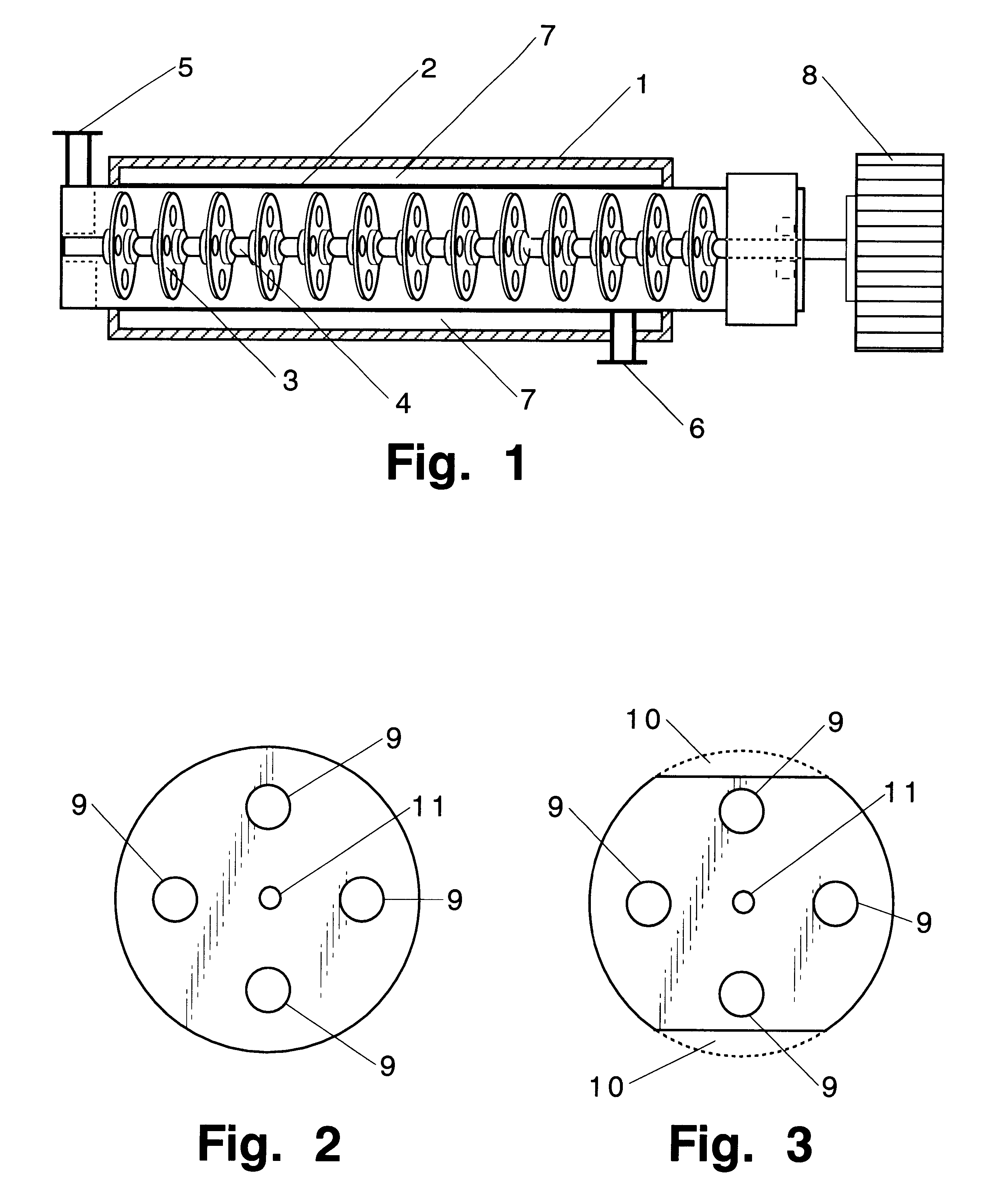Continuous hydrosilylation method for production of a modified liquid organosilicon compound
a technology of liquid organosilicon and hydrosilylation method, which is applied in the direction of liquid degasification, rotary stirring mixer, separation process, etc., can solve the problems of reducing the efficiency of the whole process, significantly prolonging the reaction time, and often taking an extremely long time to rea
- Summary
- Abstract
- Description
- Claims
- Application Information
AI Technical Summary
Problems solved by technology
Method used
Image
Examples
example 1
Practical Example 1
A tubular reactor 1 as shown in FIG. 4 was loaded with the following components: a copolymer of methylhydrogensiloxane and dimethylsiloxane having both molecular terminals capped with trimethylsiloxy groups represented by the following average formula Me.sub.3 SiO(Me.sub.2 SiO).sub.7 (MeHSiO).sub.3 SiMe.sub.3 and polyoxyethylene represented by the following formula HO(CH.sub.2 CH.sub.2 O).sub.12 CH.sub.2 CH.dbd.CH.sub.2. The first component was heated by feeding it to the reactor by means of feed pump 12 connected to heat-exchanger 15, and the second component was heated by feeding it to the reactor by means of feed pump 13 connected to heat-exchanger 16. After being mixed in dynamic mixer 17, both components were supplied to tubular reactor 1 in a continuous manner through raw-material feed port 5 located in the front part of reactor 1. The aforementioned copolymer and the polyether were introduced in a weight ratio of 3:7. Total feed rates are shown in Table 1. ...
example 2
Practical Example 2
The same raw material components as in Practical Example 1 in the same proportions as in Practical Example 1 were reacted in the same reactor 1 but with a static reactor 20 (with a 25 mm inner diameter, 3 m length, 1.5 liter capacity, and containing 60 elements) installed in a downstream position of reactor 1 (see FIG. 5). Reaction conditions and appearance of the reaction products are shown in Table 2.
It can be seen from Table 2 that when static reactor 20 is installed in the position downstream of tubular reactor 1, the hydrosilylation reaction can be completed with a residence time of 4 min. at a feed rate of 50 kg / hr.
example 3
Practical Example 3
A tubular reactor 1 as shown in FIG. 4 was loaded with the following components: a copolymer of a methylhydrogensiloxane and dimethylsiloxane having both molecular terminals capped with trimethylsiloxy groups represented by the following average formula Me.sub.3 SiO(Me.sub.2 SiO).sub.7 (MeHSiO).sub.3 SiMe.sub.3 and 1-octene represented by the following formula: CH.sub.3 (CH.sub.2).sub.5 CH.dbd.CH.sub.2. The first component was heated by feeding it to the reactor by means of feed pump 12 through heat-exchanger 15, and the second component was heated by feeding it to the reactor by means of feed pump 13 through heat-exchanger 16. After being sufficiently mixed in dynamic mixer 17, both components were supplied to tubular reactor 1 in a continuous manner through raw-material feed port 5 located in the front part of reactor 1. The aforementioned copolymer and the 1-octene were fed in a weight ratio of 7:3. Total feed rates are shown in Table 3. At the same time, tubul...
PUM
| Property | Measurement | Unit |
|---|---|---|
| mole ratio | aaaaa | aaaaa |
| diameter | aaaaa | aaaaa |
| thickness | aaaaa | aaaaa |
Abstract
Description
Claims
Application Information
 Login to View More
Login to View More - R&D
- Intellectual Property
- Life Sciences
- Materials
- Tech Scout
- Unparalleled Data Quality
- Higher Quality Content
- 60% Fewer Hallucinations
Browse by: Latest US Patents, China's latest patents, Technical Efficacy Thesaurus, Application Domain, Technology Topic, Popular Technical Reports.
© 2025 PatSnap. All rights reserved.Legal|Privacy policy|Modern Slavery Act Transparency Statement|Sitemap|About US| Contact US: help@patsnap.com



